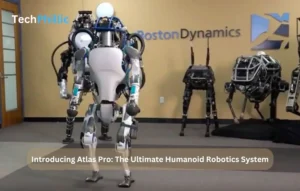A fresh chapter is unveiled in the exploration of the moon as Intuitive Machines’ Nova-C lander begins its voyage towards the Moon, carrying an array of NASA science tools and technology prototypes. This mission plays a crucial role in the Artemis program, setting the stage for future astronauts to walk on the moon. Let’s dive deep into this thrilling endeavor where Intuitive Machines plays a pivotal part.
The Mission: Science in the Spotlight
The Nova-C lander, named Odysseus in honor of the legendary explorer, is not just a transport vehicle. It serves as a mobile scientific lab filled with six distinct NASA instruments aimed at enhancing our comprehension of the Moon. From monitoring fuel consumption with the Radio Frequency Mass Gauge (provided by Intuitive Machines) to investigating how the lunar surface interacts with space conditions using the Radio-wave Observations device, Odysseus conducts a variety of studies.
However, Intuitive Machines’ contribution goes beyond equipment. Their proficiency in precision landing technologies is vital for this mission. The Navigation Doppler Lidar, their creation, accurately guides the lander to the lunar surface, ensuring the safe arrival of the delicate scientific cargo. This experience enhances their abilities for future, even more daring missions.
Unveiling Lunar Mysteries: Instruments Unveil the Narrative
As Odysseus approaches the Moon, the Lunar Node-1 Navigation Demonstrator, another offering from Intuitive Machines, springs to life. This innovative tool allows for self-directed navigation, a crucial skill for upcoming landers and rovers exploring the moon’s surface. By determining its position concerning other spacecraft and ground stations, it establishes the foundation for independent lunar exploration.
Upon touchdown, the scientific exploration truly commences. The Laser Retroreflector Array, consisting of eight mirrors, reflects laser beams from Earth, enabling precise measurement of the Moon’s distance and wobble. This information contributes to mapping the Moon’s interior and comprehending its gravitational influence, both essential for upcoming missions, particularly those involving manned landings.
Also, the Stereo Cameras for Lunar Plume-Surface Studies, an additional technology demonstration by Intuitive Machines, should not be overlooked. These small cameras capture the moon’s surface as the lander descends, recording the interaction of the engine plume with the lunar soil. This data helps engineers develop future landers that diminish disruption to the fragile lunar environment.
Intuitive Machines: A Significant Player in Artemis
Throughout this mission, Intuitive Machines’ expertise is evident. They are not merely delivering instruments; they are actively contributing to scientific exploration and technological progress. Their role extends beyond this individual mission as they have secured multiple agreements with NASA within the Artemis program. This demonstrates their escalating significance in lunar exploration, where their inventive nature and technical excellence are priceless.
H2 The Path Ahead: Overstepping the Horizon
As Odysseus settles on the lunar surface, its scientific observations persist for approximately seven days. The amassed data will shape forthcoming Artemis missions, aiding in selecting landing spots, understanding lunar resources, and designing technologies for prolonged exploration. This expedition symbolizes a significant leap for Intuitive Machines, solidifying their position as a crucial participant in space exploration. With their commitment to innovation and collaboration, they are set to help humanity unveil the secrets of the Moon and more.
Intuitive Machines – Pioneering Lunar Progress
The Nova-C mission is not only a scientific initiative; it serves as a testament to Intuitive Machines’ courageous vision and dedication to shaping the future of lunar exploration. Let’s delve into the broader implications of this mission and examine how Intuitive Machines is propelling innovation in this domain.

Beyond Science: Technology Frontiers Exploration
While the scientific devices on board Odysseus hold immense significance, the technological advancements showcased by Intuitive Machines are of equal importance. Their Nova-C lander signifies a significant step forward in design and capabilities. Its capability to land precisely on the Moon’s South Pole, which presents challenges due to its low solar illumination, highlights their engineering expertise. This accomplishment further enhances their credibility for future missions that demand precise accuracy in challenging environments.
Moreover, Intuitive Machines’ concentration on developing reusable lunar landers sets them apart. Unlike conventional expendable landers, Nova-C has the potential to return to Earth, diminishing mission expenses significantly and creating opportunities for sustainable lunar exploration. This reusability perfectly aligns with NASA’s vision of establishing a permanent lunar presence.
Collaborative Progress: Teamwork Drives Success
Intuitive Machines does not work in isolation. Their success heavily relies on strong partnerships with prominent entities in the space sector. Their collaboration with NASA through the CLPS program serves as a prime example. By utilizing NASA’s knowledge and resources, Intuitive Machines can focus on their core strengths – innovation and agility – while ensuring mission success.
Additionally, their active engagement with other private firms, universities, and research institutions fosters knowledge exchange and speeds up technological advancements. For example, their collaboration with MIT on the Radio Frequency Mass Gauge demonstrates their commitment to advancing space technology through collective efforts.
Constructing a Lunar Environment: Leading the Way
The Nova-C mission represents a crucial step towards establishing a robust lunar ecosystem. By showcasing their capabilities and promoting collaboration, Intuitive Machines is well-positioned to assume a leadership role in this initiative. Envision a future where Intuitive Machines’ landers routinely transport cargo and personnel to the Moon, supporting scientific investigations, resource extraction, and potentially space tourism. The groundwork for this future is presently being laid, with each successful mission bringing us closer to that scenario.
Human Connection: Inspiration and Opportunity
Beyond technology and science, the Nova-C mission carries significant implications for humanity. It motivates younger generations to aspire to big dreams and pursue careers in STEM disciplines. Witnessing a private entity like Intuitive Machines actively engaged in space exploration fuels a desire for exploration and innovation.
Furthermore, this mission opens doors for future crewed lunar expeditions. The data acquired and technologies tested pave the path for a safe and sustainable return to the Moon, ultimately leading to humanity establishing a lasting presence there. This possibility rekindles the spirit of Apollo and unlocks doors for even greater missions, such as ventures to Mars and beyond.
Also Read: Slash Your Electricity Bill & Go Green: The Complete Guide to Solar-Powered Fridges
Conclusion
The Nova-C mission signifies a pivotal moment in lunar exploration, with Intuitive Machines spearheading the charge. Their dedication to innovation, collaboration, and sustainability harbors great promise for the future of space exploration. As we witness the lander embark on its scientific voyage, one thing remains certain: this mission marks only the beginning of an exciting new phase, wherein Intuitive Machines plays an indispensable role in unraveling the mysteries of the Moon and beyond.







